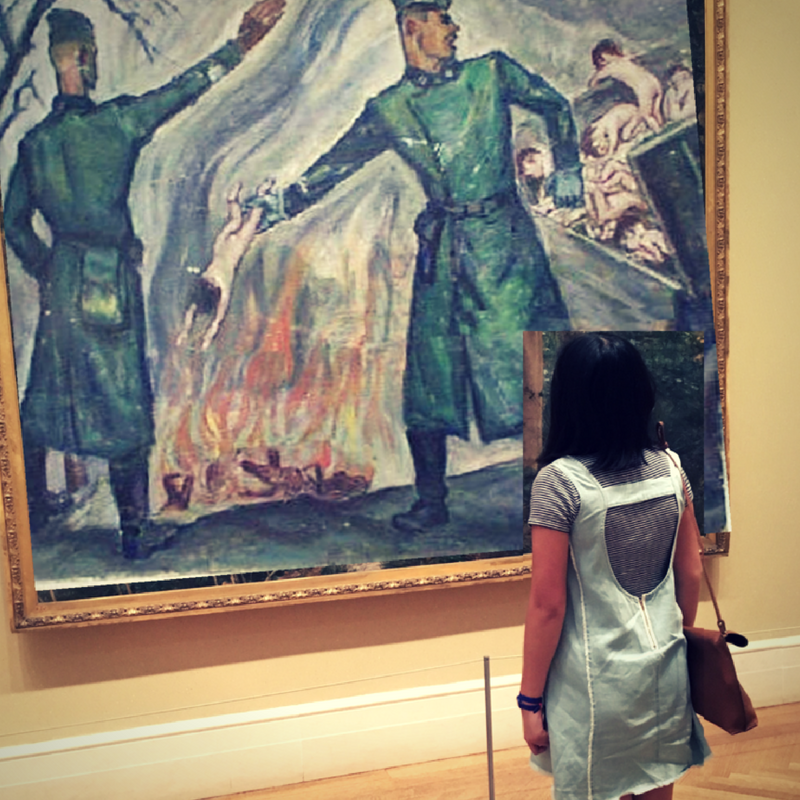From 1933 to 1945, up to six million Jews were killed. Thousands of mothers, fathers, and children were persecuted each day. Stripped from their homes, pride, and identity, Jews had nothing left except for art and each other. They turned to their creativity for comfort because the only thing that they could control was a paintbrush or a pencil.
Many works of art from the Holocaust were made by Jewish detainees in ghettos or concentration camps. Using the atrocities they saw or endured day to day, the inmates drew and painted their experiences.
For instance, Bedrich Fritta, a Bohemian artist, sketched “Rear Entrance,” which is a dark and daunting piece. He modeled his painting after the ghetto that he was assigned to. “The half-open gate is a metaphor for death, there is no visible alternative, the only way out is into the darkness,” says Smerling, the Art from the Holocaust show curator in Berlin. Although Fritta was killed in the Auschwitz concentration camp, he and his experiences continues to live on through his paintings.
Other artists were much more radical. Every stroke they made was a stab at Hitler’s cruelty and manipulation. For example, Pavel Fantl, a Czech artist, “portrays Hitler as a clown,” Smerling explains, “and the instrument on which he played the melodies with which he deceived an entire people, is on the floor, destroyed, with blood on his hands.” What makes this piece stand out was how brave Fantl must have been to be able to bring this critic on Hitler to life. Just like Fritta, Fantl was executed in Auschwitz. However, another Czech managed to salvage his pieces by transferring them outside the ghetto and then hiding them in a wall.
Due to the favors of friends smuggling and concealing artworks from the Germans, countless masterpieces still exist many decades later. After World War II, up to 700,000 works were collected and returned back to their proper countries.
Despite being able to salvage a great number, a good portion were looted or destroyed by Nazis. Even within these past ten years, German authorities still have been discovering paintings from the 1940’s. For instance, in 2013, Germans reported 1,500 pieces were found in a Munich apartment that belonged to the son of Hildebrand Gurlitt, one of Herman Goering’s favorite art dealers. It is very likely that there are still more stolen art to be uncovered.
Luckily, there are over one hundred Holocaust museums in the world filled with art, and a large portion of them are in the United States. There are three museums in New York, which becomes convenient for us and eliminates the excuse to not check out the commemorative exhibits. From sculptures to scratchy drawings, art is one of the most intimate ways of telling a story.
The hardships that our ancestors have endured brought us here and puts everything in perspective. Although it might take another 50 years or an eternity to unveil all the art lost in this tragic event in history, appreciating the art from the Holocaust reminds us to honor the lives lost so many years ago.
Amelia Chen
graphics editor
Graphic: Amelia Chen

